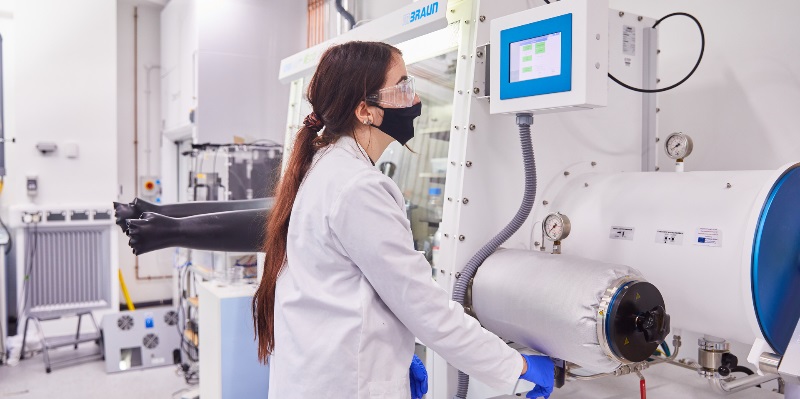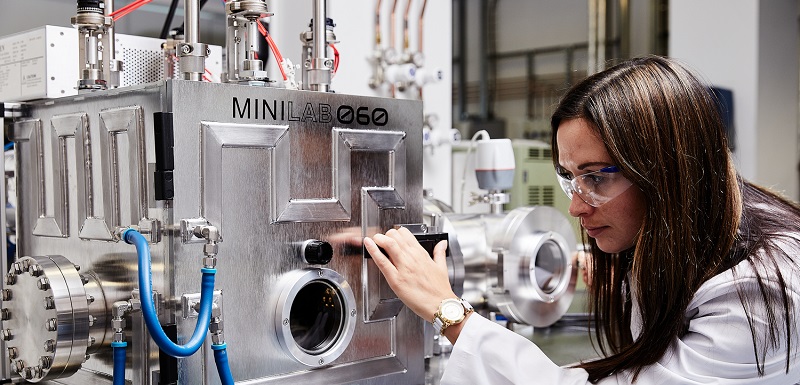Opinion | Wednesday, 18th August 2021
Why hydrogen is key to the future of the UK’s renewable energy supply
Dr Ian Madley explains why the government is focusing on hydrogen energy

By Dr Ian Madley, Reader at the Manchester Fuel Cell Innovation Centre at Manchester Metropolitan University.
With the announcement of the UK government’s hydrogen strategy much of the debate has focussed on the efficiency of using hydrogen as energy over a reliance on direct electricity use.
There are a number of reasons why the focus on hydrogen will play an important role in the development of a resilient renewable energy supply in the UK.
The UK’s mainland has a very dependable energy supply. While significant progress has been made in developing renewable sources of electricity generation fossil fuels still dominate daily energy demand, particularly the use of natural gas for heat which varies seasonally.
Replacing the demand for energy currently used for heat and transport is therefore the key challenge as the UK moves towards Net Zero, which is the balance between the amount of greenhouse gas produced and the amount removed from the atmosphere.
In its latest report to parliament, the Climate Change Committee (CCC) envisage a switch to an electrical based energy system. They explain how “by the early 2030s all new cars and vans and all boiler replacements in homes and other buildings must be low-carbon – we expect largely electric.”
The CCC anticipate that electrical demand will increase by 50% by 2035 and double or treble by 2050, while at the same time the proportion of electricity generated from low-carbon sources will increase from 50% now to 100% by 2035.
For the UK, the dominant form of renewable electrical generation is wind energy. However, this is susceptible to the presence of a “blocking high pressure” when there is little or no wind for a prolonged period.
This highlights the challenge of being able to supply the demand for energy. Renewable generation, such as wind farms, are not able to produce without having large amounts of poorly utilised non-renewable generation capacity available.
Energy storage
To deliver a resilient system in a high renewables world, the UK will need high capacity, long duration storage, which is capable of meeting the full daily energy demands of around 3,300GWh in summer and 6,700GWh in winter, over a sustained period.
This variability in energy demand means that renewable generation can also provide part of the solution to the need to store energy, as there are also periods when the amount of renewable energy generated is too much for the electrical grid to handle meaning much of the energy produced is wasted.
As the amount of renewable generation has grown, so too has the amount of generation that is unable to be used.
In 2020, 3,700GWh of wind generation was curtailed at a cost to consumers of £274 million. Given the planned growth in both onshore and offshore wind generation, this level of waste is expected to rise to more than 7,700GWh by 2030.
What is required to balance these periods of over and under supply is storage. However, the need for high capacity, long term storage is limited to three options:
- compressed air energy storage
- pumped hydro storage
- hydrogen storage
Compressed air energy storage is still at a demonstration scale. The first large scale implementation in the UK is planned in Northern Ireland at only 1.9GWh.
Pumped hydro storage, while a mature technology, is restricted by geography and the need to have large storage lakes built at height.
In terms of hydrogen storage, underground gas storage is a well-established technology although development is still needed to store hydrogen.
Analysis by the British Geological Survey has identified three regions (Cheshire, East Yorkshire and Wessex) with a combined theoretical storage capacity of around 3,000,000GWh suitable for underground hydrogen storage.
This means hydrogen storage has the capacity to offer the most hopeful mechanism of providing the high capacity and duration storage that will be needed to support a move to a fully renewable energy system.
Advantages of hydrogen
While all of these storage technologies can be used to regenerate electricity, hydrogen has a number of other advantages.
As well as the current industrial use of hydrogen, it can also be used to deliver the high temperate processes currently delivered by burning natural gas.
When it comes to transport hydrogen can replace petrol and diesel, particularly for large vehicles such as heavy goods vehicles, buses, trains and potentially ships and aircraft.
Using electrolysers to convert the 3,700GWh of wasted wind generation in 2020 would have produced over 63,000 tonnes of high purity hydrogen ideal for use in transport applications.
Put another way, the UK is currently wasting enough potential renewable energy generation to enable 500,000 cars to be driven 10,000 miles.
Additionally, when it comes to moving energy around hydrogen can be transported at a much higher capacity than electricity and natural gas.
Over the last 10 years there has also been significant development in battery technology to both reduce cost and increase storage capacity. This has been driven by investment in infrastructure to support recharging for electric vehicles.
Further investment in the research and development of the technology and in the development of a skilled workforce through the Faraday Challenge, combined with policies to support the commercial rollout, have stimulated both demand and supply.
For the government to deliver on its ambition for the hydrogen economy, similar levels of investment and policy support is needed.
Specifically, this should address investment in the infrastructure to produce and distribute hydrogen ahead of demand. This should be combined with investment in research and development to reduce the cost of producing hydrogen by electrolysis and support the development of suitable underground hydrogen sites.
While the UK government’s hydrogen strategy is welcome, nothing short of the sort of commitment shown by the German Government earlier this year to invest €8 billion in hydrogen projects will do if the UK is to reach the stated objective of becoming a leader in the future hydrogen economy.





